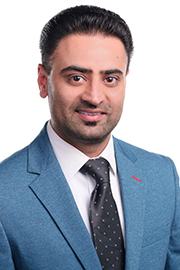- Mar/28/24 10:50:00 a.m.
If the opposition were ever to form a government and actually function effectively, they would understand how this process works. The process was competitive and fair, as it should be. But do you know what, Mr. Speaker? I highly doubt that the opposition will ever be able to form a government with this kind of approach, which is anti-infrastructure, which is anti-building, which is anti making life affordable for the people of this province. The legacy of the opposition is leaving our historic places, like Ontario Place and the science centre, in a state of neglect and disrepair—voting against transit, voting against hospitals, opposing highways like Highway 413 and the Bradford Bypass.
Mr. Speaker, the legacy of this Premier and this government is to bring our iconic destinations back to life, making them remarkable, world-class destinations for people of all—
Interjections.
- Hear!
- Rabble!
- Mar/28/24 1:20:00 p.m.
It’s a great pleasure to continue discussion of this budget motion and the government’s budget policies. And I was talking about the infrastructure investment that government is making over 10 years and I just want to emphasize how important it is having that long-term horizon—it’s not next year; it’s not up to the next election—it’s a 10-year program where the government is proposing to spend $190 billion, which is a record number in so many different sectors.
I was talking about transit and I mentioned the GO Transit investments, which are very substantial both in terms of infrastructure and service levels. I want to talk now about subways. The overall transit window over 10 years is $67.5 billion—a record. And subways are such an important part of the fabric of the city, particularly here in the GTA and particularly here in Toronto directly. There has always been a reluctance to invest in subways and get them done. That’s why, really, the city of Toronto did nothing for 30 and 40 years. That’s why so much of our transit system is above ground, with buses and streetcars, versus other big cities where they never stopped digging. Happily, our government uploaded the subway projects because I sat on the board of the TTC for three years and I saw first-hand how time after time after time—for example, the Scarborough subway was rejected. There’s always a reason not to put shovels in the ground because it’s not easy for neighbourhoods. We’ve seen what’s happening with the Eglinton Crosstown; it’s been very, very challenging.
Well, I’ll tell you what, folks: When that line opens, people then will say, “Okay, it was painful, but this is the benefit we get.” The same thing for Scarborough and what’s happening now with the three-stop subway there. I believe it’s called Diggy Scardust—if I’m not mistaken—digging actively. But whether it’s there or the Ontario Line, the north York expansion, the three-stop Scarborough subway, these are all being built.
The other thing I’d say is that there’s been an adjustment to the way these projects are done because what’s called the public-private partnership model, the P3 model, is seen to be not working as well in transit as it could. And so, to their great credit, Metrolinx has adjusted that model and that’s why all these projects are running ahead of time and no doubt they will be delivered on time and on budget. So I’m very much looking forward to that huge investment in transit in our community.
Because, by the way, let’s not forget: The members opposite talk frequently about the environment. You know what? Transit is a phenomenal investment for the environment. It gets people out of cars, off the roads, into efficient transit and it’s great for doing that, so that’s a great policy that our government is following.
I want to now just mention health care on the infrastructure side: Over 10 years, $48.5 billion of health care facilities—phenomenal number, and it’s so important. I won’t talk about the state of things when we came into government, but I’ll tell you what we’re doing: We’re fixing it, not just for tomorrow, but for the generations to come. And it’s $50 billion over 10 years, including close to $36 billion in hospital capital grants to support more than 50 hospital projects all around the province that would add approximately 3,000 new beds over 10 years. Just the magnitude of those numbers is just fantastic. Again, it’s not for tomorrow; that’s for the next generation, including:
—the Weeneebayko Area Health Authority of Moosonee, way up north. Comments were made about northern health care. We’re investing there;
—a new 17-storey tower at Queen Street and Victoria Street for the University Health Network St. Michael’s Hospital, to accommodate expanded emergency department and ambulatory services;
—redevelopment of the Ottawa Hospital Civic Campus to become one of the most advanced trauma centres in eastern Ontario;
—support for the Windsor-Essex regional hospital, so important in that part of the province; and
—projects all over: Thunder Bay Regional Health Sciences Centre, as well, partners with the University Health Network. So it goes on and on, which is such great news for these communities.
Long-term care, as well: We’ve spent $6.4 billion since 2019. The goal is to build 58,000 new and upgraded long-term beds in the province by 2028, such an important investment. You know, when I went to high school—I’ll be there in one of those beds in the not-too-distant future, perhaps. Anyway, hopefully, it will ease the way. But it’s so important for our seniors who built this great province and country of ours to have the kind of facilities that they need and deserve.
I will say here again, talking about the legacy of previous governments, that over 15 years, the previous government built 611 beds, I believe the number was, in Ontario. In my own riding of Bruce–Grey–Owen Sound—the great previous member, Bill Walker—in four years, there were about 950 beds, versus 611 in the whole province over 15 years. That just shows you the perspective that they had versus what we’re having, and we’re going to keep going and building, building and building until there’s enough beds for our folks.
Schools, as well: $23 billion, including $16 billion in capital grants over the next 10 years to build more schools all over the province—French and English public schools in Blind River; a new English school in Ottawa; St. Anne’s Catholic School in St. Thomas; and in Vaughan, a French Catholic school. In my own community in the great, thriving metropolis of Markdale, the Beavercrest school is being built. These institutions matter so much to our local communities, and that’s why our government is going to keep building. So it’s not just for tomorrow; it’s for our kids and their kids in the future.
All that to say, Madam Speaker, it’s just a great pleasure to stand up and support this motion and all the things that we are doing. Whether it’s in infrastructure, in program spending, in making life more affordable, we are there for Ontarians, and we’re going to keep going and make sure we get it done.
As of December 2023, Ontario had approximately 513,000 spaces in licensed child care centres for children zero to 12 years old, and as of December, there were more than 309,000 spaces for children zero to five enrolled in CWELCC, representing 92% of all spaces in this child care group. We’ve got early childhood learning all over. We’ve signed the $13.2-billion program. We will keep investing in child care, work with the community and make sure that those spaces are available for our kids and their kids.
- Hear!
- Rabble!
- Mar/28/24 2:20:00 p.m.
Thank you to the member opposite. I think this budget, budget 2024, is a budget that’s focused on building Ontario, that’s building infrastructure, hospitals, education facilities, transit infrastructure and subways. It’s also focused on affordability for Ontario residents.
When our government took office in 2018, we did inherit the largest sub-sovereign debt in the entire world. Since then, both Standard and Poor’s and Moody’s have upgraded Ontario to positive outlook. They have upgraded the financial standing of Ontario, and this government has had six clean financial audits from the Auditor General, unlike the previous Liberal government. So, how do you account for that, to the member opposite?
- Hear!
- Rabble!




